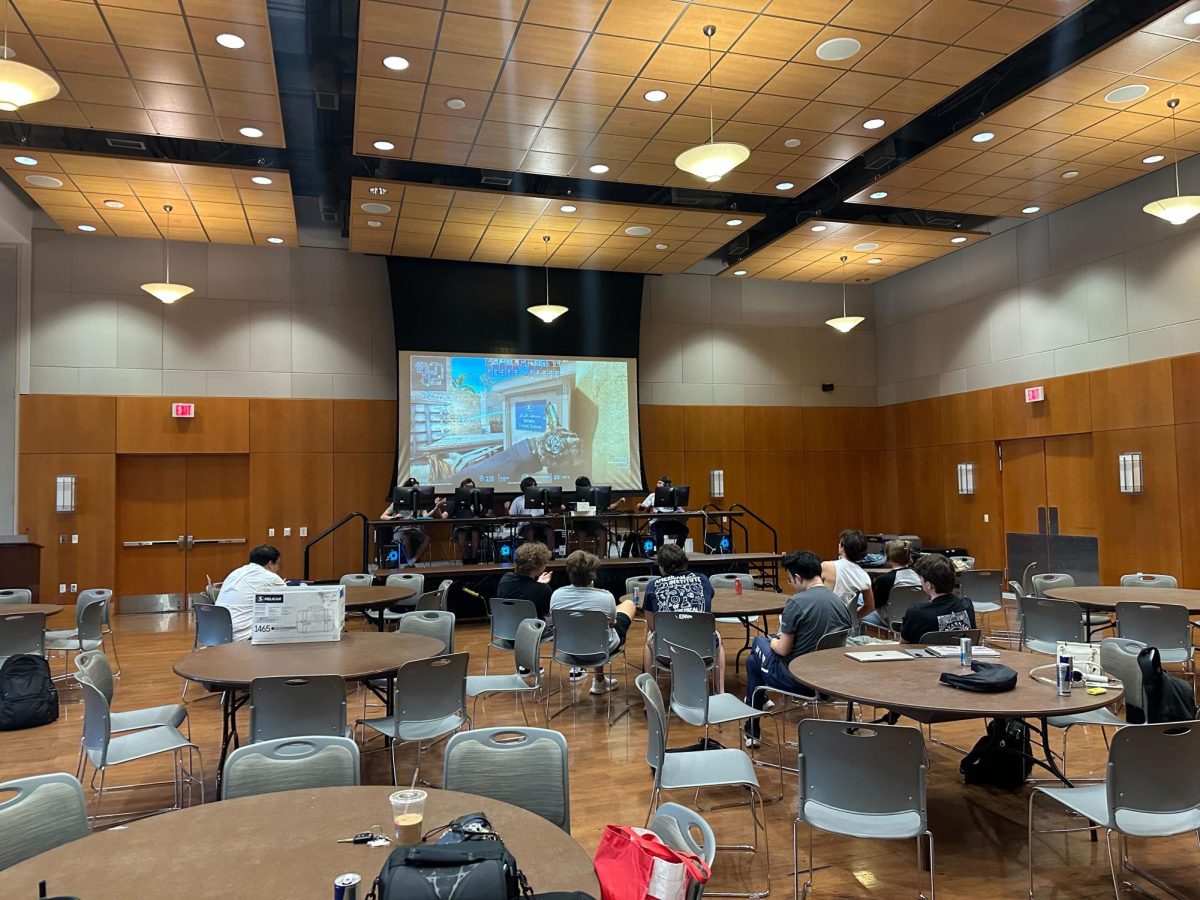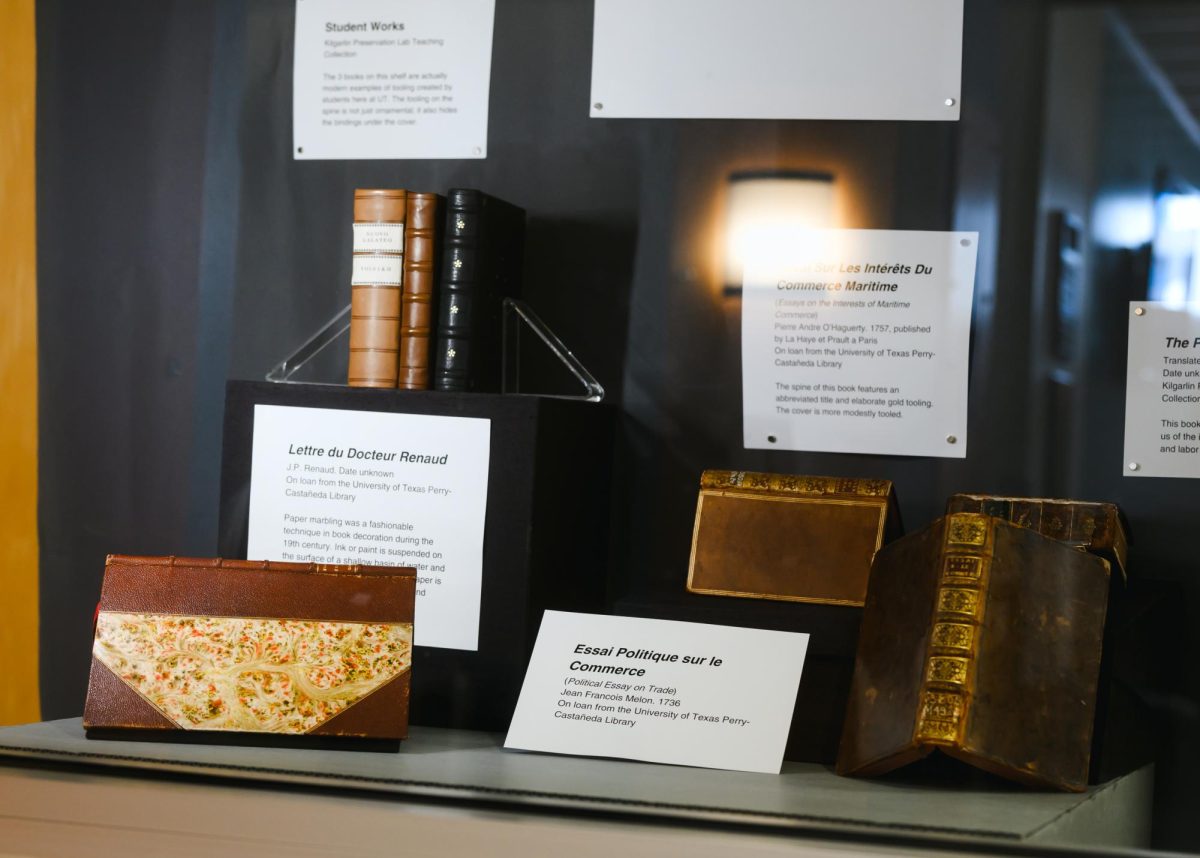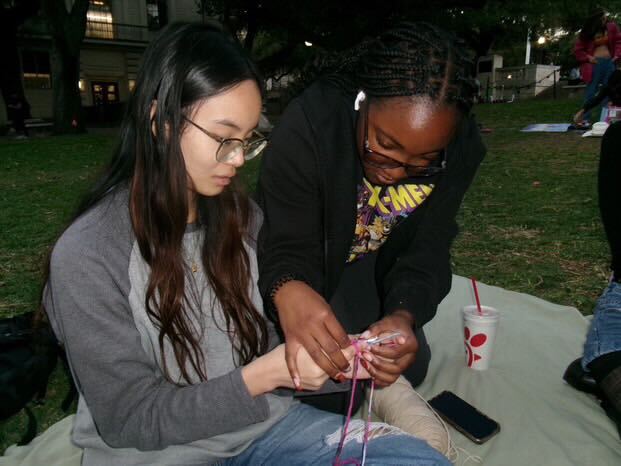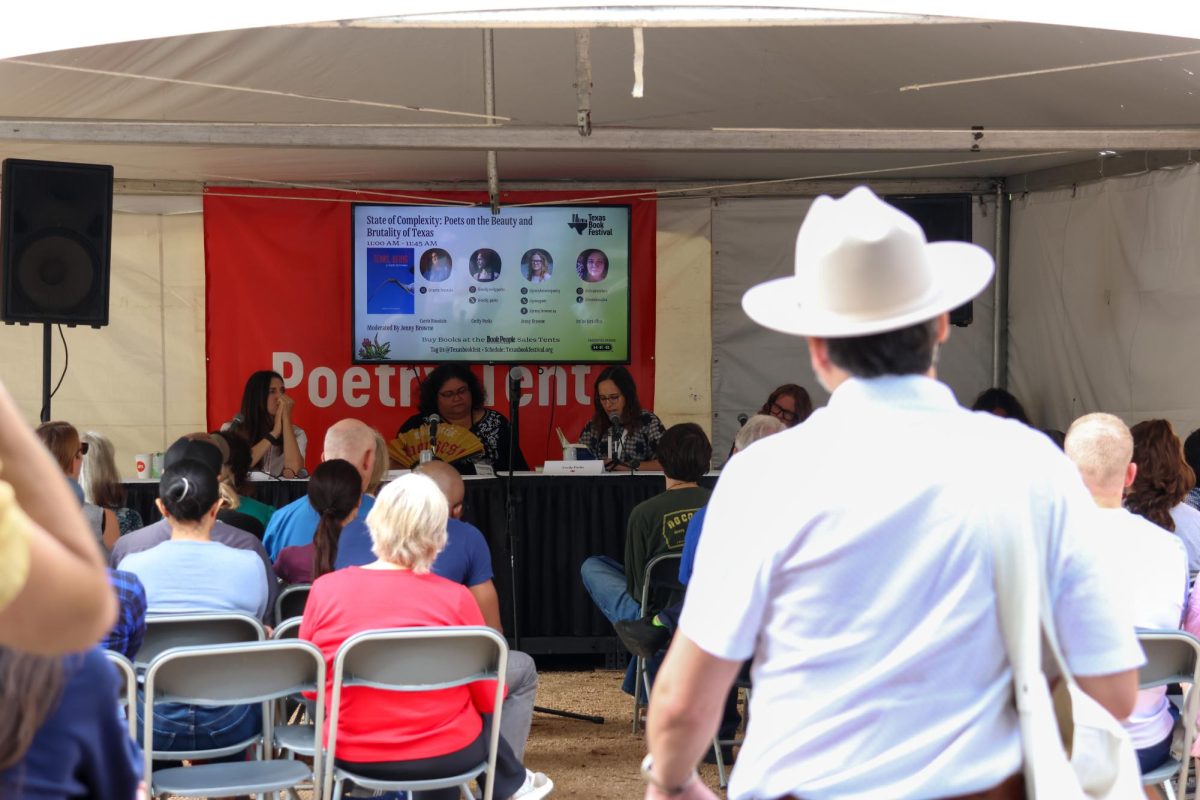As students of the Dell Medical School walk to class, they pass a newly installed bronze sculpture dominating the courtyard of the Health Learning Building. It’s 11 feet tall, over 16 feet wide — and it’s a conch shell.
On Oct. 24, a new sculpture, “Spiral of the Galaxy,” was installed outside the Dell Medical School as part of UT’s Landmarks public art program. The sculpture is a seven-ton bronze conch created by contemporary artist Marc Quinn.
“It’s a fabulous sculpture for us — it really captures the spirit and the aesthetic we’re trying to create with the medical school and within the health district,” said Clay Johnston, inaugural dean of the Dell Medical School, in an email. “More than that, the conch symbolizes growth and health security, so it resonates with our mission. It’s going to be a great icon for the campus, the school and everything that grows around it.”
Conch shells are created by the Queen Conch sea snail. After they die, their shell often becomes a protective habitat for other small sea snails. The Landmarks selection committee, which includes several art and architecture faculty, along with art history graduate student Robin Williams, felt this was emblematic of what the Dell Medical School represents for the Austin community.
“The new Dell Medical School has goals to be really innovative in terms of interdisciplinary research and community-driven wellness initiatives and thinking about the person in a more holistic way,” Williams said. “The shell’s form is a direct reflection of those things, so it’s kind of a model for harmonious and integrated living.”
Quinn is most commonly known for his classical busts entitled “Self,” each of which are made with 10 pints of his own blood, frozen in silicone. Starting in 1991, he made a new bust every five years so when all five heads are together, the viewer can see how he aged.
With a $1.8 million cost, the conch was funded by the University’s Art in Public Spaces policy, which requires 1 to 2 percent of all funds for major construction and renovations to support acquiring new art for the campus. This is the first of two installations at the Dell Medical School. The second, a collection of two dozen portraits by Ann Hamilton, will be unveiled early next year.
Landmarks external affairs coordinator Nikolas Nobel said the program usually tries to find art that will stay in the viewer’s mind long after each encounter. Along with finding a piece that fits within the space available, he said the selection committee usually tries to choose pieces that connect to the school or college they are placed with.
“‘Spiral of the Galaxy’ has a lot to do with life and living, and that does tie into the Dell Medical School and finding new ways to explore the medical industry,” Nobel said. “It also serves as this anchor point at the Dell Medical School. Once that part of campus opens up to more students and more traffic, people will notice it.”
Williams said she feels this sculpture reflects a reversal of where value is traditionally placed in social hierarchies. Bronze is commonly used for sculptures of significant figures such as Martin Luther King and George Washington, but this conch represents how art can highlight the value of common people within society.
“This is not some culturally deemed hero; rather, it’s just a small seashell,” Williams said. “It’s a very common natural object, and it challenges us to think about where and how we place value.”












